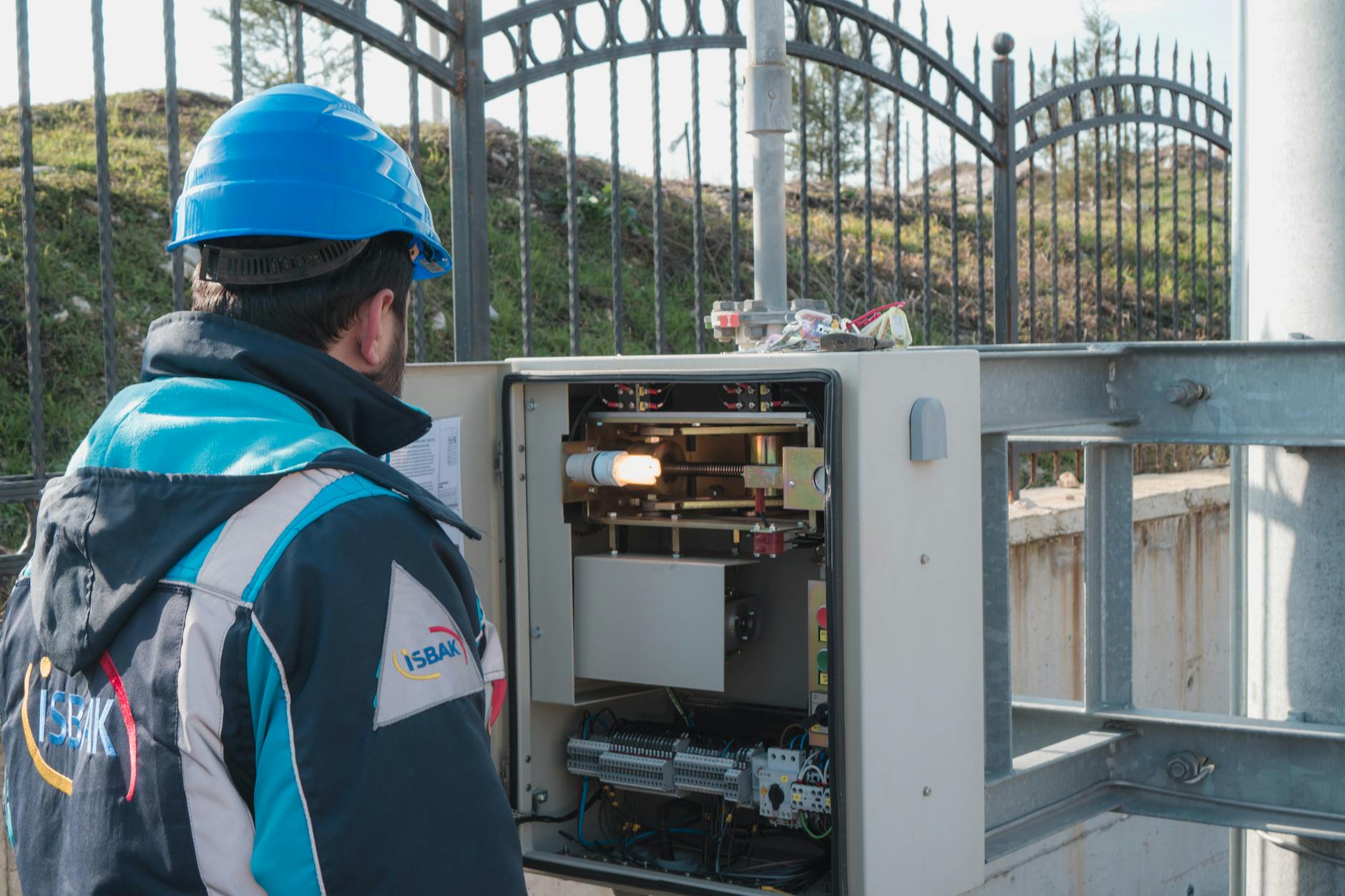
Electrical Safety Ebook: Hazards and Control Measures – Free Download
Introduction
Electrical safety is a crucial aspect of both residential and commercial environments. The significant risks associated with electrical work necessitate rigorous safety measures to protect individuals and ensure smooth operations. Our free Electrical Safety Ebook, “Hazards and Control Measures,” provides comprehensive insights into maintaining a safe electrical environment. Let’s explore the key elements covered in this essential guide.
Chapter 1: Understanding Electrical Hazards
Common Electrical Hazards
Working with electricity involves various hazards. Recognizing these risks is the first step toward effective safety management.
Shock and Electrocution
- Shock: Occurs when electricity passes through the body, potentially causing severe injury.
- Electrocution: A fatal form of electric shock resulting in death.
Burns
- Thermal Burns: Result from contact with hot surfaces or arc flashes.
- Electrical Burns: Occur when electricity passes through the body, damaging internal tissues.
Arc Flash
- Definition: A dangerous release of energy caused by an electrical arc.
- Consequences: Can cause severe burns, injuries, and even fatalities.
Importance of Identifying Hazards
Identifying and understanding these hazards is crucial for implementing appropriate control measures and ensuring safety during electrical work.
Chapter 2: Safety Measures and Precautions
Personal Protective Equipment (PPE)
Using the right PPE is essential for anyone working with electricity.
Types of PPE for Electrical Work
- Insulated Gloves: To protect hands from electric shocks.
- Safety Glasses: To protect eyes from sparks and debris.
- Flame-Resistant Clothing: To shield against burns from arc flashes.
- Hard Hats: To protect against head injuries.
Electrical Inspections and Maintenance
Regular inspection and maintenance of electrical systems are vital for safety.
Routine Checks
- Visual Inspections: Regularly check for signs of wear and damage.
- Testing: Use appropriate testing devices to ensure circuits are functioning correctly.
Maintenance Protocols
- Scheduled Maintenance: Follow a routine maintenance schedule.
- Record Keeping: Maintain detailed records of all inspections and maintenance activities.
Chapter 3: Safe Work Practices
Proper Handling of Electrical Equipment
Handling electrical equipment correctly is crucial to prevent accidents and ensure efficient operations.
- Proper Use: Use equipment according to manufacturer instructions.
- Inspection: Check equipment for damage before use.
- Storage: Store equipment properly when not in use.
Lockout/Tagout Procedures
Lockout/Tagout (LOTO) is a safety procedure used to ensure that machines are properly shut off and not started up again before maintenance or repair work is completed.
- Implementation: Use locks and tags to secure equipment.
- Training: Train employees on LOTO procedures and protocols.
Safe Wiring Practices
Adhere to safe wiring practices to minimize risks:
- Correct Wiring: Follow wiring diagrams and standards.
- Secure Connections: Ensure all connections are tight and secure.
- Avoid Overloading: Do not overload circuits or outlets.
Chapter 4: Emergency Preparedness and Response
Importance of Emergency Plans
Having a comprehensive emergency plan can save lives and reduce injury severity.
- Evacuation Routes: Clearly mark exits and escape paths.
- Emergency Contacts: Ensure contact information for emergency services is readily available.
First Aid for Electrical Injuries
Prompt first aid can prevent minor injuries from becoming major issues.
- First Aid Kits: Ensure kits are well-stocked and accessible.
- Training: Train workers in basic first aid and CPR.
Fire Safety Measures
Fire hazards are a serious concern in electrical work.
- Fire Extinguishers: Ensure they are available and functional.
- No Smoking: Enforce no-smoking policies in hazardous areas.
- Flammable Materials: Store and handle flammable materials properly.
Chapter 5: Health and Ergonomics in Electrical Work
Preventing Musculoskeletal Disorders
Prolonged periods of electrical work can lead to musculoskeletal disorders. Prevent these by:
- Stretching Exercises: Incorporate regular stretching routines.
- Proper Seating: Use ergonomically designed seats to reduce strain.
Ergonomic Tools and Workstations
Ergonomic considerations can reduce the risk of injury and enhance comfort:
- Tool Design: Use tools designed to minimize strain.
- Workstation Setup: Arrange workstations to reduce bending and reaching.
Chapter 6: Training and Education
Importance of Continuous Training
Ongoing training ensures that workers stay informed about the latest safety practices and regulations.
Certification Programs for Electricians
Enroll in certification programs that cover:
- Hazard Recognition: Teach workers to identify and mitigate risks.
- Equipment Use: Train workers on the safe operation of electrical tools.
- Emergency Procedures: Prepare workers to handle emergencies.
Chapter 7: Legal Regulations and Standards
OSHA Standards for Electrical Safety
Compliance with OSHA standards is essential for maintaining a safe work environment.
Understanding Local Safety Regulations
Different regions have specific safety regulations. Stay informed about:
- Building Codes: Adhere to local construction codes.
- Workplace Safety Laws: Follow local laws to avoid penalties.
Conclusion
Safety in electrical work is not optional—it’s essential. By following the guidelines and measures outlined in our free Electrical Safety Ebook, you can create a safer working environment for yourself and your team. Don’t wait until an accident happens; download the ebook today and stay ahead in safety.
FAQs
What is the main focus of the Electrical Safety Ebook?
The ebook focuses on identifying common hazards in electrical work and providing effective control measures to ensure a safe working environment.
How can I access the free Electrical Safety Ebook?
You can download the ebook for free from our website. Just follow the link provided and fill in your details to get instant access.
Who should read this Electrical Safety Ebook?
This ebook is ideal for electricians, safety managers, project managers, and anyone involved in electrical work.
What are some key safety tips mentioned in the Ebook?
Key tips include the use of PPE, proper handling of electrical equipment, maintaining a clean work environment, and having an emergency response plan.
Why is continuous training important in electrical safety?
Continuous training ensures that workers stay updated with the latest safety practices and regulations, reducing the risk of accidents and injuries.
Good efforts